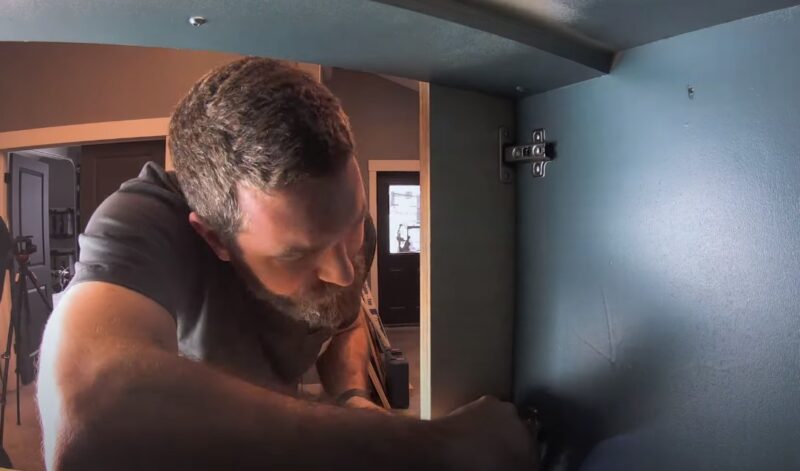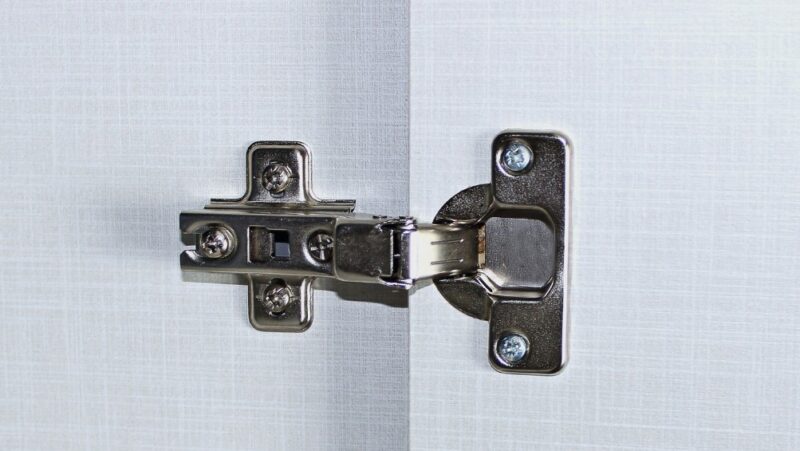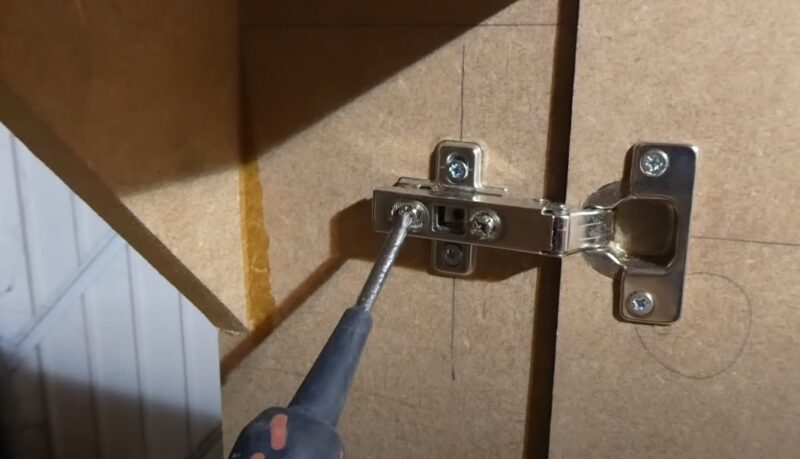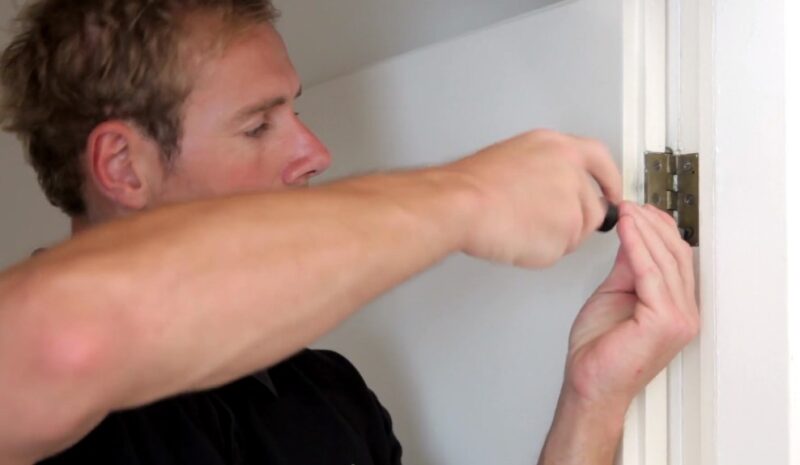Alright, so you’ve got a cabinet door that’s doing a poor job at being a door. It’s sagging, it’s crooked, or it’s just not closing right. Maybe it’s all three—congratulations, you’ve hit the trifecta of cabinet door problems.
Lucky for you, adjusting cabinet hinges is a straightforward task that takes about 5 to 10 minutes and costs around $10. I’m here to guide you through the whole process, so let’s begin without further delay.
The Usual Suspects
The main issues you’ll encounter with cabinet doors are:
- Sagging
- Misalignment
- Doors binding too close to the cabinet
Now, let’s get right into how to fix these with nothing more than a Phillips-head screwdriver with a #2 screw tip.
Tools You’ll Need
You’re going to need:
- A Phillips-head screwdriver (a manual one, because power drills can strip screw heads or turn your wood into Swiss cheese)
- Maybe a hammer and some extra screws if things are really out of whack
Basic Steps to Adjust Cabinet Hinges

1. Inspect First, Adjust Later
Before you start wildly turning screws, take a minute to inspect the hinges. There are four key mounting screws that secure the hinge to the cabinet and door. These need to be tight for the hinge to function correctly.
2. Lateral Adjustments
If your door is looking like it’s had one too many, it’s probably misaligned side to side. Adjust this by turning the screw on the horizontal arm of the hinge closest to the door. A few turns should get it back in line.
3. Vertical Adjustments
For those doors that seem to move up and down, use the top screw on the hinge plates inside the cabinet. This will correct the height.
4. Depth Adjustments
When your door decides it wants to be closer to you or is keeping too much distance, depth adjustments are needed. Turn the screw farthest from the door on the horizontal arm of the hinge to get that snug fit.
The Finer Details

Periodic Checks
Just like you should check your oil now and then, inspecting and adjusting cabinet hinges every few months can prevent more significant issues down the road. Think of it as a tiny bit of maintenance to keep everything in check.
Seasonal Changes
The joys of wood and humidity. Seasonal changes can cause wood doors to warp. When this happens, be ready to repeat the adjustment process. Annoying? Yes. Necessary? Also yes.
Older Hinges
If you’re dealing with hinges that predate adjustable screws, you’ve got a bit more of a challenge. Options here include tightening the existing screws, using longer screws, or adding shims. In other words, get creative with what you’ve got.
Troubleshooting

Still Not Closing Right?
If, after all this, your cabinet door is still giving you grief, it might be time to look at the cabinet structure itself. Sometimes, the problem isn’t the door but the cabinet. And if that’s beyond your skill set, call in a professional before you make things worse.
Consistency is Key
Adjusting one cabinet door might mess with the alignment of the entire row. It’s the domino effect at its finest. Be prepared to adjust multiple doors to get a consistent look.
Checking the Reveal
When you’re done with your adjustments, check the reveals. These are the gaps between the door and the cabinet frame. If they’re even, congrats, you’ve done it right. If not, go back and tweak until they are.
A Quick Recap
Here’s the short version for those who skim:
- Use a Phillips-head screwdriver with a #2 screw tip.
- Tighten the screws.
- Adjust side-to-side with the screw closest to the door.
- Adjust up and down with the top screw on the hinge plate.
- Adjust depth with the screw farthest from the door.
- Check every few months.
- Expect to adjust during seasonal changes.
- Older hinges might need extra creativity.
Final Thoughts
Adjusting cabinet doors is a simple and cost-effective DIY project. With just a basic tool and a bit of patience, you can fix those sagging, misaligned, or binding doors in no time.
So, roll up your sleeves, grab your trusty screwdriver, and get to work. And if it all goes south, there’s no shame in calling for backup.

